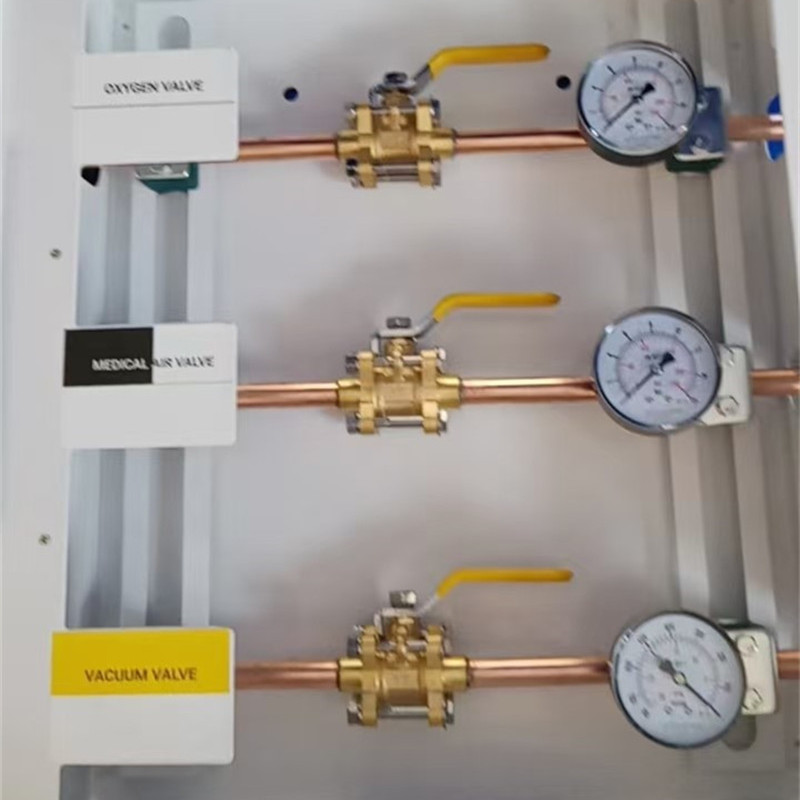Location of Alarm Check Valves in Medical Gas Systems
Alarm check valves are critical components in medical gas systems, ensuring safe gas flow and system integrity. Their placement is determined by system design and safety protocols:
Zone Valve Boxes
Alarm check valves are typically integrated into zone valve boxes near gas supply zones (e.g., operating rooms, ICUs). These boxes combine valves and alarms to monitor pressure and detect leaks.
Main Supply Lines
Installed along primary gas pipelines to prevent backflow and maintain pressure stability. They connect to centralized alarm controllers for real-time monitoring.
Branch Pipeline Junctions
Positioned at branch points where medical gases (e.g., oxygen, nitrous oxide) diverge to different departments. This ensures localized control and rapid alarm triggering during anomalies.
Proximity to Area Alarm Controllers
Linked to area alarm controllers that receive signals from the valve system. These controllers relay status updates to the facility’s central monitoring network.
Key Design Standards
Compliance with national medical gas regulations (e.g., ISO 7396-1) mandates valve placement for accessibility during emergencies and routine maintenance.


